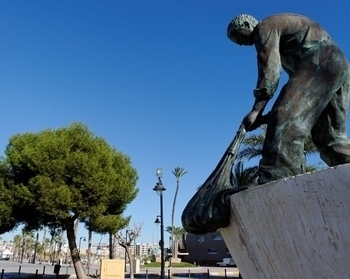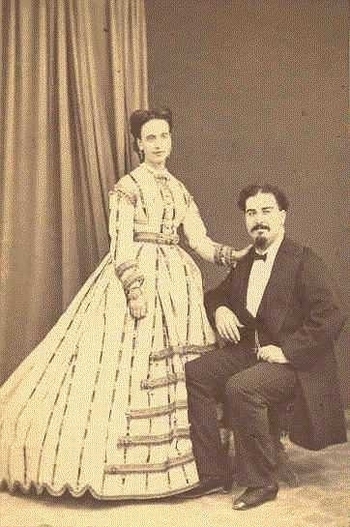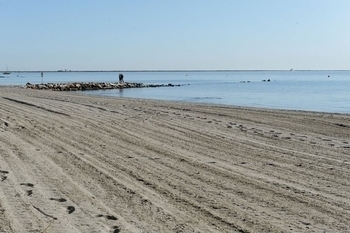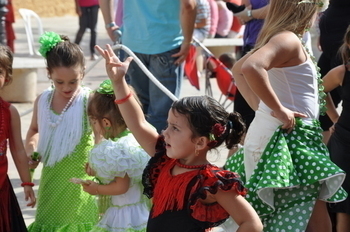

Guidelines for submitting articles to San Pedro del Pinatar Today
Hello, and thank you for choosing San Pedro del Pinatar.Today to publicise your organisation’s info or event.
San Pedro del Pinatar Today is a website set up by Murcia Today specifically for residents of the urbanisation in Southwest Murcia, providing news and information on what’s happening in the local area, which is the largest English-speaking expat area in the Region of Murcia.
When submitting text to be included on San Pedro del Pinatar Today, please abide by the following guidelines so we can upload your article as swiftly as possible:
Send an email to editor@spaintodayonline.com or contact@murciatoday.com
Attach the information in a Word Document or Google Doc
Include all relevant points, including:
Who is the organisation running the event?
Where is it happening?
When?
How much does it cost?
Is it necessary to book beforehand, or can people just show up on the day?
…but try not to exceed 300 words
Also attach a photo to illustrate your article, no more than 100kb

Lo Pagán, San Pedro del Pinatar
Pedanías of San Pedro del Pinatar, Lo Pagán
 Lo Pagán is the main tourism Pedanía of the municipality of San Pedro del Pinatar, mainly due to the inclusion of the beaches of La Puntica and Villananitos, with their fine sand and shallow water, as well as the famous Baños de Lodo, the mud baths of San Pedro del Pinatar. ( Click Mud baths, San Pedro del Pinatar.)
Lo Pagán is the main tourism Pedanía of the municipality of San Pedro del Pinatar, mainly due to the inclusion of the beaches of La Puntica and Villananitos, with their fine sand and shallow water, as well as the famous Baños de Lodo, the mud baths of San Pedro del Pinatar. ( Click Mud baths, San Pedro del Pinatar.)
The original names for the area occupied by Lo Pagán were La Puntica, the small headland which marks the western end of the bay, and La Junquera, an area which was swampy in winter but dry in the summer, making it good pasture land, where the only production was reeds and rushes.
 There is very little evidence of actual habitation prior to the 19th century, other than in the fishing community of El Terrero, a small headland where Roman salt fish works indicate the production of salt fish and garum sauce ( click garum sauce), a pungent fish sauce much prized by the Romans and which was produced all along the Murcian coastline for onward shipment across the Roman Empire.
There is very little evidence of actual habitation prior to the 19th century, other than in the fishing community of El Terrero, a small headland where Roman salt fish works indicate the production of salt fish and garum sauce ( click garum sauce), a pungent fish sauce much prized by the Romans and which was produced all along the Murcian coastline for onward shipment across the Roman Empire.
El Terrero became known as “El Gurugú”, after the war in Morocco of 1909, named after a mountain range near Melilla which acquired a certain notoriety because of the ferocious fighting which took place there.
Little is known of when this settlement was originally abandoned and when it was again re-occupied by new inhabitants, although it is known to have been occupied during the 19th century.
 Apart from this settlement, there were no known inhabitants in the pedanía until the 19th century when the area was a country estate belonging to Pedro Pagán y Ayuso, a summer retreat to which he invited intellectuals and politicians to spend summer evenings at the literary soirées he organized with his wife.
Apart from this settlement, there were no known inhabitants in the pedanía until the 19th century when the area was a country estate belonging to Pedro Pagán y Ayuso, a summer retreat to which he invited intellectuals and politicians to spend summer evenings at the literary soirées he organized with his wife.
Pedro Pagán y Ayuso was Mayor of Murcia in 1874, and his wife was Leonor Guerra, the darling of Murcia’s intelligentsia, famous for her literary salons in the capital and the group of friends she gathered around her during the summer months in La Puntica. This was THE place to visit for anyone who wished to hear sonnets, classical guitar music, arias accompanied on the piano or Cuban music, and visitors to “La Casa de Doña Leonor” included such prestigious figures as Cánovas del Castillo (president of Spain 1875-76), the Baron of Benifayó and Emilio Castelar (president 1873-74).
 In the 19th century other wealthy families from Murcia began to build their own summer houses on the coast nearby, and by the end of the 19th century La Puntica and La Junquera were dotted with properties belonging to wealthy Murcians.
In the 19th century other wealthy families from Murcia began to build their own summer houses on the coast nearby, and by the end of the 19th century La Puntica and La Junquera were dotted with properties belonging to wealthy Murcians.
A good example is the Hacienda Vistabella, which was probably owned by the Conde de Floridablanca, and later by Pedro Pagán y Ayuso.
Later, the estate was inherited by Don Pedro’s and Doña Leonor’s son, Pedro Pagán Guerra, known by the locals as Periquito Pagán.
The bathing station of La Generala already existed at the end of the 19th century, and was also referred to as Vistabella due to its proximity to the house mentioned above. On 10th April 1911, the order was given to Ambrosio Orsi to build a quay and a bathing station on the shore of the Mar Menor, and this bathing area was given the name of Floridablanca.
The bathing stations were a meeting point for the community who spent the summer on the coast. They normally included a covered living-room opening out onto the sea, with a bar, known as an “ambigú”, separate cabins for gentlemen and ladies, and steps down to the sea, which were made discreetly private by esparto grass partitions. The two bathing stations in Lo Pagán had special cabins for hot baths, which were recommended to combat the effects of rheumatic and respiratory conditions. These treatments quickly acquired a good reputation.
 Meanwhile, the familias of the fishermen of Lo Pagán moved a little inland, towards San Pedro del Pinatar, creating the hamlets bearing their names, known as Los Cuarteros, La Loma de Abajo, Los Revoltones, Los Sáez, Las Beatas, Los Tárragas, Los Antolinos, Los Imbernones, Los Crispines, Las Pardas and Casas de los Cacos.
Meanwhile, the familias of the fishermen of Lo Pagán moved a little inland, towards San Pedro del Pinatar, creating the hamlets bearing their names, known as Los Cuarteros, La Loma de Abajo, Los Revoltones, Los Sáez, Las Beatas, Los Tárragas, Los Antolinos, Los Imbernones, Los Crispines, Las Pardas and Casas de los Cacos.
Aerial photos from 1921 show that the only homes at the time were the summer houses of the nobility right next to the beach, on the road between San Pedro del Pinatar and La Ribera, the church of La Generala and the few modest dwellings of El Gurugú. The rest was completely deserted.
 By the 1930s and 1940s there were three fish shops and markets in La Puntica where the catch was auctioned: the one belonging to José María Henarejos, next to the warehouses of Las Salinas del Pudrimer; one belonging to Inocencio Albaladejo, at the bottom of (El Gurugú); and the one run by Gonzalo Delgado, next to the carpenter and boat repairer of the Orsi family in La Junquera.
By the 1930s and 1940s there were three fish shops and markets in La Puntica where the catch was auctioned: the one belonging to José María Henarejos, next to the warehouses of Las Salinas del Pudrimer; one belonging to Inocencio Albaladejo, at the bottom of (El Gurugú); and the one run by Gonzalo Delgado, next to the carpenter and boat repairer of the Orsi family in La Junquera.
Many of the houses in Lo Pagán were occupied by two families: in winter the owners lived in them, and in summer they rented parts of them out to holiday-makers in order to earn some extra money, referring to their guests as “Los Señoritos”. The Señoritos used to rent rooms looking out onto the patios, and this tradition still occurs in many cases despite the age of some of the buildings rented out.
 In the 1935 local electoral roll and census there is no mention of Lo Pagán, and the name is not found on official documents until the 1940 census, after the Civil War.
In the 1935 local electoral roll and census there is no mention of Lo Pagán, and the name is not found on official documents until the 1940 census, after the Civil War.
In 1941, the Franciscan nuns of La Purísima Concepción set up a summer home for orphaned girls, and a chapel was officially inaugurated in 1951. At around this time the hamlets of Los Cuarteros Bajos (Las Pardas), Casas de los Cacos and Molino de Quintín were subsumed into the larger village of Villa Nanitos, which was then adopted as the name for all of them.
1945 saw the creation of the Escuela de Orientación Marítima y Pesquera, the first educational establishment in Lo Pagán. In 1954 the primitive old church, which had been built at the behest of Carmen Arce de Cassola, was demolished to make way for a new one in the popular Mediterranean style, designed by the architect Damián García Palacios. During the summer of 1959, Carmen Conde wrote her “Poemas del Mar Menor” in the bathing station of Floridablanca, paying homage to the area’s countryside, the sea, the mills and the local people.
 In 1967 the Mar Menor Laboratory of the Instituto Español de Oceanografía was inaugurated, and a year later the parish of Lo Pagán was created, with the church being dedicated to Nuestra Señora del Carmen. On 9th June 2001 the new old people’s home run by the Franciscan nuns of La Purísima Concepción was opened, and the new church was consecrated on 15th July of the same year.
In 1967 the Mar Menor Laboratory of the Instituto Español de Oceanografía was inaugurated, and a year later the parish of Lo Pagán was created, with the church being dedicated to Nuestra Señora del Carmen. On 9th June 2001 the new old people’s home run by the Franciscan nuns of La Purísima Concepción was opened, and the new church was consecrated on 15th July of the same year.
Other facilities to have featured in the growth of Lo Pagán in the last few decades include the “José Antonio Pérez” football ground of Pinatar FC, the Nuestra Señora del Carmen primary school, the Casa del Mar, the health centre, the esplanade, the Parque de los Reyes de España, the pensioners’ club, the fishing quay and market, the Puerto Deportivo and Club Náutico, the regeneration of the beaches and the Tourist Office.
Where is Lo Pagán?
Click for map, Lo Pagán
Fiestas in Lo Pagán
 Procession of the Three Kings: On 5th January the three kings arrive at Lo Pagán by boat, from where they continue up the main road to San Pedro del Pinatar.
Procession of the Three Kings: On 5th January the three kings arrive at Lo Pagán by boat, from where they continue up the main road to San Pedro del Pinatar.
Holy Week: the Easter celebrations of San Pedro del Pinatar have been declared an Item of Regional Tourist Interest, and Lo Pagán is featured every year on the Wednesday.
Feria Sevillana: In June Lo Pagán is festooned with lights and the residents dress up in typical Seville costumes to hold their own Andalucían fair, with live music and dancing and plenty of open-air hostelries.
The main fiestas of Lo Pagán are held in July to celebrate the feast day of the Virgen del Carmen.
Charcas de las Salinas
 At the very northernmost point of the Mar Menor are the Charcas de Lo Pagán, the mud baths or Baños de Lodo, which were created by the unique climatic conditions and the high saline content of the seawater in the lagoon of the Mar Menor. The mud deposited here by the tidal current over the centuries is widely believed to have therapeutic properties and is a popular venue for those who wish to enjoy a free mud health and beauty treatment.
At the very northernmost point of the Mar Menor are the Charcas de Lo Pagán, the mud baths or Baños de Lodo, which were created by the unique climatic conditions and the high saline content of the seawater in the lagoon of the Mar Menor. The mud deposited here by the tidal current over the centuries is widely believed to have therapeutic properties and is a popular venue for those who wish to enjoy a free mud health and beauty treatment.
Beaches of Lo Pagán.
One of the greatest attractions of this area are the beaches of the Mar Menor, with soft sand, shallow water and safe bathing conditions.
Click here for beaches, Lo Pagán, La Mota, Villananitos and Playa de la Puntica.
MOLINO DE QUINTÍN, SAN PEDRO DEL PINATAR
 The Molino de Quintín in San Pedro del Pinatar is on the esplanade which runs along the edge of the Parque Regional de las Salinas, next to the famous Baños de Lodo.
The Molino de Quintín in San Pedro del Pinatar is on the esplanade which runs along the edge of the Parque Regional de las Salinas, next to the famous Baños de Lodo.
It is relatively good condition, and would have fulfilled a number of ròles relating to both water management and grinding.
The mill’s architecture is fairly typical. The main body is conical, tapering slightly towards the top, and the only deterioration visible is in the exterior rendering and the wooden structure of the sails.
Today the Molino de Quintín is a landmark for those seeking the mud baths, and local legend says that in order for the baths to really be effective for the health, those coated with mud should then walk the 3km down to the next remaining windmill, the Molino de la Calcetera and back. Bathers should also bathe in the mud 9 times during their holidays.
Never mind the mud, 6 km back and forth, 9 times, is bound to do the trick!
